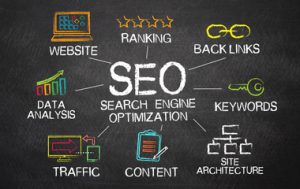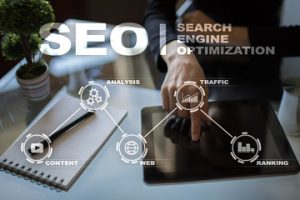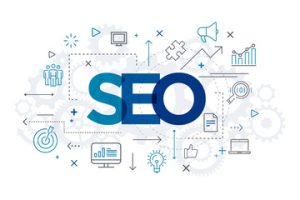Every search begins with curiosity, but it’s the unseen architects who shape what we find. Behind every top-ranked result lies the strategic work of experts weaving precision into algorithms. SEO Company Boise Idaho no longer just optimizes words but orchestrates visibility in a crowded digital ecosystem. Their craft balances science, psychology, and storytelling to transform search into opportunity.

In the early days, optimization meant stuffing pages with keywords and waiting for results. But the landscape has evolved into something far more sophisticated. Algorithms now value intent, meaning, and context over repetition. SEO companies have adapted by becoming interpreters of human behavior as much as of code.
Today’s SEO experts act like digital cartographers, mapping out how audiences navigate information. They study search habits, engagement patterns, and emotional triggers that guide clicks. The focus has shifted from manipulation to understanding—the goal is not to trick the system but to align with it. True optimization mirrors authenticity while enhancing visibility.
Search engines evolve daily, constantly refining how they measure value. Every small algorithm change can ripple through the web, reshaping rankings overnight. A modern SEO company thrives by staying ahead of those shifts through analysis and adaptation. Their work is a continuous experiment, blending data with intuition.
The magic begins with understanding a client’s identity and translating it into discoverable content. SEO specialists dissect tone, audience, and goals before a single keyword is chosen. They build strategies that reflect not only what people search for but why they search. That insight is what separates mechanical optimization from meaningful presence.
Behind every search result is an intricate balance between relevance and authority. An SEO company’s mission is to strengthen both without sacrificing integrity. This involves crafting content that informs, engages, and earns trust simultaneously. When done right, the result feels effortless, even though it’s meticulously engineered.
The invisible power of SEO lies in its ability to predict intent before it’s fully formed. By analyzing data patterns, experts can anticipate what users will seek next. This foresight allows companies to position themselves as answers to questions not yet asked. In a digital world fueled by attention, anticipation becomes a form of currency.
Modern optimization is about experience rather than exposure. A fast, intuitive, and engaging site now matters as much as keyword placement. SEO companies integrate design thinking, user psychology, and content strategy into a single vision. The objective is not just to attract visitors but to convert them into believers.
At its core, SEO mirrors human curiosity. People want answers, stories, and validation. Search engines reward sites that provide these with clarity and consistency. SEO experts bridge the gap between human need and digital delivery, ensuring both sides benefit.
Content remains the beating heart of SEO, but its role has evolved. It’s no longer just about producing volume but about conveying value. Every article, image, or video must satisfy a purpose and a feeling. A skilled SEO company ensures that every element tells a story aligned with both audience intent and algorithmic logic.
Data fuels decisions in this field, but creativity gives it direction. Metrics reveal what works, but imagination discovers what could. SEO companies merge analytical precision with narrative artistry, using numbers as inspiration rather than limitation. That fusion of data and emotion is what turns strategy into success.
Visibility today extends far beyond a single search result. A strong presence spans multiple touchpoints—voice, mobile, social, and beyond. SEO firms understand this interconnectedness, designing holistic ecosystems of discoverability. Every link, title, and snippet contributes to a larger web of influence.
The relationship between a client and an SEO company is deeply collaborative. Trust becomes essential, as results take time and require patience. Together, they craft blueprints that may take months to mature but yield lasting impact. The best outcomes arise when both sides understand that SEO is not a sprint but a long, strategic climb.
The language of SEO continues to evolve with technology. Artificial intelligence now plays a key role in predicting trends and analyzing engagement. SEO companies use AI-driven insights to personalize strategies that speak directly to human emotions. This marriage of technology and empathy defines the next era of optimization.
What makes an SEO company invaluable is its ability to decode complexity. Algorithms, analytics, and search behaviors form an ever-shifting puzzle. Specialists translate these technical layers into actionable clarity. They transform confusion into structured visibility, guiding businesses through uncertainty with precision.
Mobile-first indexing has redefined how visibility works. SEO firms must now optimize for screens that fit in palms, not desktops. This means faster load times, cleaner design, and intuitive flow. Every tap, swipe, and scroll becomes part of the optimization process.
Voice search introduces another layer of evolution. As people speak their searches, natural language takes precedence. SEO companies adjust by focusing on conversational phrasing and local intent. They understand that tone and context now shape visibility as much as structure does.
Authority building remains central to long-term success. Backlinks, mentions, and engagement metrics act as trust signals. But genuine authority can only come from consistent value creation. SEO companies help clients earn recognition through credibility, not shortcuts.
Transparency has become the soul of modern SEO. Gone are the days of secret tricks and hidden tactics. Today’s professionals educate their clients, explaining each step and its purpose. This openness builds confidence and ensures that success is sustainable.
The psychological dimension of SEO often goes unnoticed but holds immense power. The way headlines trigger curiosity, or how meta descriptions spark clicks, all stem from understanding emotion. SEO companies study behavior patterns to make each interaction purposeful. Their strategies are as much about feelings as they are about formulas.
A single keyword can hold multiple meanings depending on context. Modern SEO thrives on that nuance, ensuring content captures intent precisely. The aim is not just visibility but relevance—appearing where one truly belongs. That precision creates a seamless connection between searcher and solution.
Beyond ranking, SEO influences perception. The top results on a page often shape what people believe to be credible. An SEO company’s role extends to maintaining ethical visibility that aligns with truth and quality. In doing so, they uphold not just performance but integrity.
Every optimization project tells a story of discovery and refinement. It begins with uncertainty and evolves through testing, learning, and evolving. SEO companies thrive in this iterative process, embracing failure as feedback. Each adjustment brings them closer to perfect alignment between human desire and digital discovery.
Technical SEO forms the foundation that supports creativity. Without a solid structure, even the most poetic content struggles to shine. Experts meticulously refine site architecture, speed, and accessibility. These invisible adjustments allow content to rise naturally through the ranks.
As the web grows more competitive, differentiation becomes vital. SEO companies use data storytelling to help brands express unique identities. By interpreting trends and weaving originality into strategy, they create distinct digital voices. The result is recognition that feels earned rather than engineered.
Adaptability defines the strongest SEO professionals. They treat every algorithm update as an invitation to innovate. Instead of resisting change, they evolve with it, turning disruption into advantage. This resilience keeps them relevant in an industry that never stands still.
An often-overlooked strength of SEO companies is their role in education. They empower clients to understand visibility and maintain it independently over time. This shared knowledge transforms short-term projects into lasting partnerships. Empowerment becomes the ultimate proof of expertise.
In the modern digital economy, search visibility determines more than just clicks—it shapes survival. An unseen business might as well not exist at all. SEO companies act as lifelines, connecting potential with possibility. They give ideas the power to be found and valued.
The global nature of search demands cultural sensitivity. Words that attract one audience might alienate another. SEO specialists study linguistic nuances and behavioral contexts to ensure inclusivity. They build strategies that transcend boundaries and resonate universally.
Sustainability in SEO means creating systems that endure beyond trends. Quick wins fade, but ethical and data-informed strategies last. SEO companies prioritize long-term growth through quality and trust. Their work becomes a living framework that adapts gracefully over time.
User experience now intertwines with SEO in ways once unimaginable. Search engines reward satisfaction as much as relevance. A fast, visually appealing, and intuitive experience signals genuine value. SEO companies optimize these subtle emotional cues to boost engagement naturally.
The creative spirit within optimization often hides behind analytics dashboards. Yet every strategy begins with imagination—a vision of how discovery should feel. SEO professionals bring that vision to life with precision, shaping pathways between questions and answers. Their artistry lies in making the invisible feel intuitive.
In the coming years, search will grow even more personal and dynamic. Context-aware algorithms will predict needs before they’re expressed. SEO companies will evolve into digital behavior architects, designing experiences rather than pages. Their influence will stretch across every layer of online interaction.
Despite constant evolution, the heart of SEO remains timeless—connection. It’s about matching what people seek with what deserves to be found. SEO companies exist to ensure that meaningful content reaches those who need it most. Their success lies not in dominating search results but in empowering discovery.
Every click, impression, and ranking is more than a number—it’s a story of alignment. It represents the invisible collaboration between human curiosity and digital intelligence. SEO companies stand quietly at that intersection, shaping the narrative of what the world sees. Their work defines how information flows, how trust forms, and how progress is found in pixels.
In a world overflowing with data, they bring clarity. In noise, they create signal. Through strategy, empathy, and innovation, they turn searches into stories and clicks into connections. The true power of an SEO company lies not in algorithms, but in its ability to make meaning visible in the endless web of the unseen.


